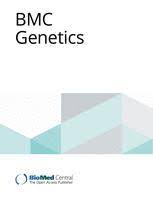Ver ítem
- xmlui.general.dspace_homeCentros e Institutos de InvestigaciónCICVyA. Centro de Investigación en Ciencias Veterinarias y AgronómicasInstituto de GenéticaArtículos científicosxmlui.ArtifactBrowser.ItemViewer.trail
- Inicio
- Centros e Institutos de Investigación
- CICVyA. Centro de Investigación en Ciencias Veterinarias y Agronómicas
- Instituto de Genética
- Artículos científicos
- Ver ítem
Geographic distribution of sex chromosome polymorphism in Anastrepha fraterculus sp. 1 from Argentina
Resumen
Background
Anastrepha fraterculus is recognized as a quarantine pest in several American countries. This fruit fly species is native to the American continent and distributed throughout tropical and subtropical regions. It has been reported as a complex of cryptic species, and at least eight morphotypes have been described. Only one entity of this complex, formerly named Anastrepha fraterculus sp. 1, is present in Argentina. Previous cytogenetic studies
[ver mas...]
Background
Anastrepha fraterculus is recognized as a quarantine pest in several American countries. This fruit fly species is native to the American continent and distributed throughout tropical and subtropical regions. It has been reported as a complex of cryptic species, and at least eight morphotypes have been described. Only one entity of this complex, formerly named Anastrepha fraterculus sp. 1, is present in Argentina. Previous cytogenetic studies on this morphotype described the presence of sex chromosome variation identified by chromosomal size and staining patterns. In this work, we expanded the cytological study of this morphotype by analyzing laboratory strains and wild populations to provide information about the frequency and geographic distribution of these sex chromosome variants. We analyzed the mitotic metaphases of individuals from four laboratory strains and five wild populations from the main fruit-producing areas of Argentina, including the northwest (Tucumán and La Rioja), northeast (Entre Ríos and Misiones), and center (Buenos Aires) of the country.
Results
In wild samples, we observed a high frequency of X1X1 (0.94) and X1Y5 (0.93) karyomorphs, whereas X1X2 and X1Y6 were exclusively found at a low frequency in Buenos Aires (0.07 and 0.13, respectively), Entre Ríos (0.16 and 0.14, respectively) and Tucumán (0.03 and 0.04, respectively). X2X2 and X2Y5 karyomorphs were not found in wild populations but were detected at a low frequency in laboratory strains. In fact, karyomorph frequencies differed between wild populations and laboratory strains. No significant differences among A. fraterculus wild populations were evidenced in either karyotypic or chromosomal frequencies. However, a significant correlation was observed between Y5 chromosomal frequency and latitude.
Conclusions
We discuss the importance of cytogenetics to understand the possible route of invasion and dispersion of this pest in Argentina and the evolutionary forces acting under laboratory conditions, possibly driving changes in the chromosomal frequencies. Our findings provide deep and integral genetic knowledge of this species, which has become of relevance to the characterization and selection of valuable A. fraterculus sp. 1 strains for mass rearing production and SIT implementation.
[Cerrar]

Autor
Giardini, Maria Cecilia;
Nieves, Mariela;
Scannapieco, Alejandra Carla;
Conte, Claudia Alejandra;
Milla, Fabian Horacio;
Schapovaloff, Maria Elena;
Frissolo, Maria Soledad;
Remis, Maria Isabel;
Cladera, Jorge Luis;
Lanzavecchia, Silvia Beatriz;
Fuente
BMC Genetics 21 (Suppl 2) : 149. (Diciembre 2020)
Fecha
2020-12
Editorial
BioMed Central
Documentos Relacionados
Formato
pdf
Tipo de documento
artículo
Proyectos
(ver más)
INTA/PNBIO-1131044/AR./Genómica aplicada a estudios de ecología molecular y diversidad genética.
INTA/AEBIO-242411/AR./Epidemiología molecular agropecuaria de patógenos y plagas de importancia económica
Palabras Claves
Derechos de acceso
Abierto
 Excepto donde se diga explicitamente, este item se publica bajo la siguiente descripción: Creative Commons Attribution-NonCommercial-ShareAlike 2.5 Unported (CC BY-NC-SA 2.5)
Excepto donde se diga explicitamente, este item se publica bajo la siguiente descripción: Creative Commons Attribution-NonCommercial-ShareAlike 2.5 Unported (CC BY-NC-SA 2.5)


